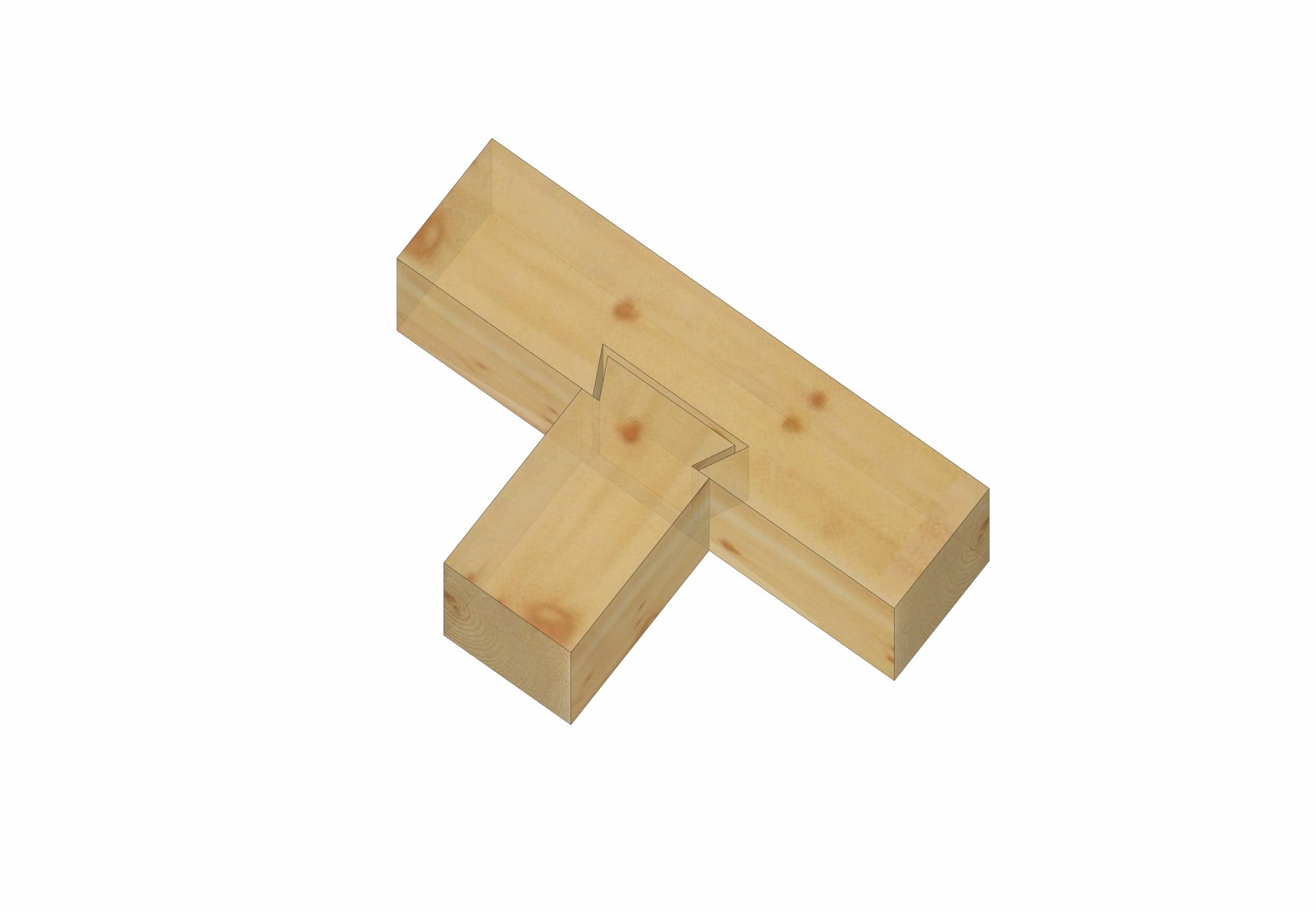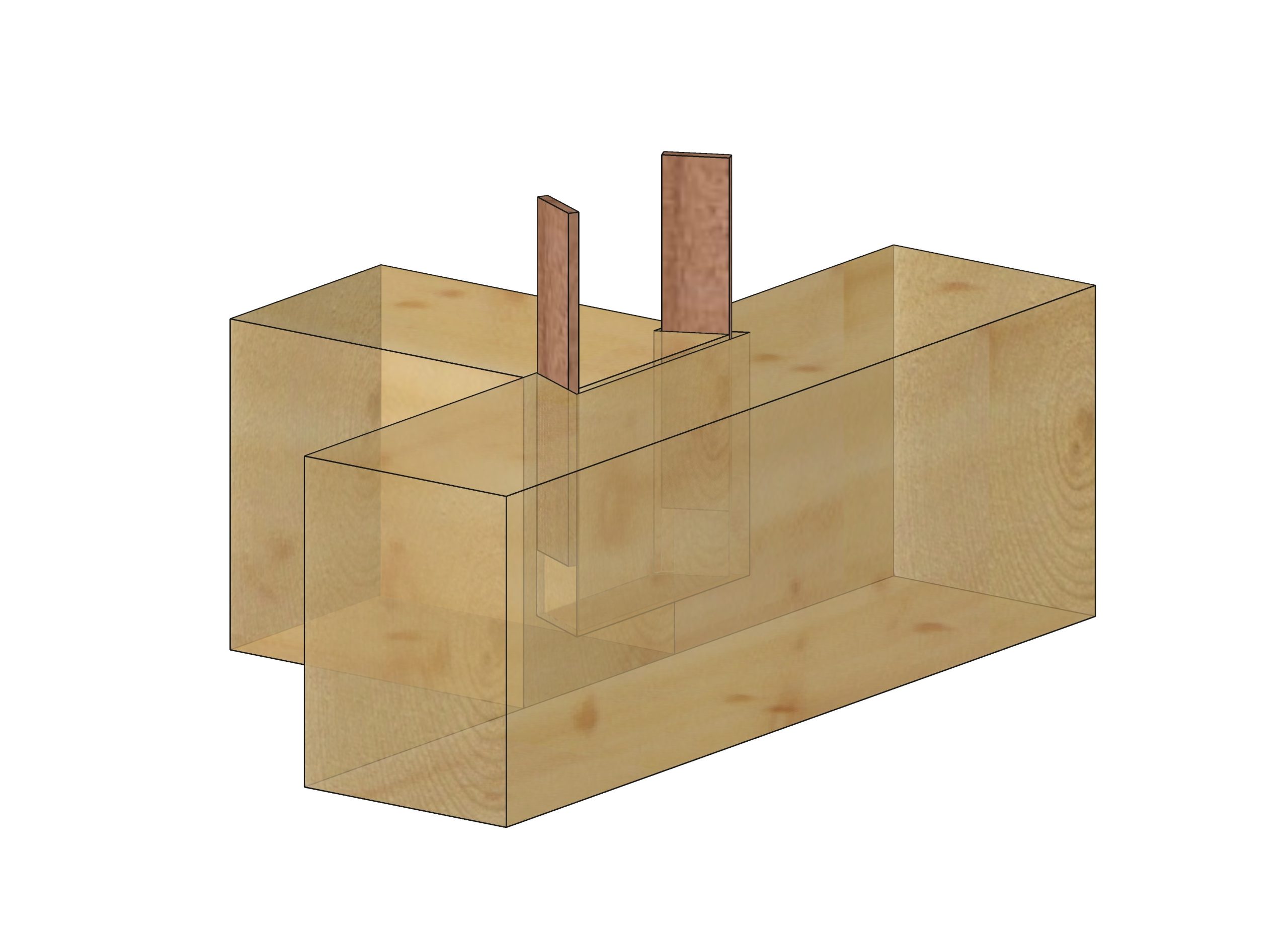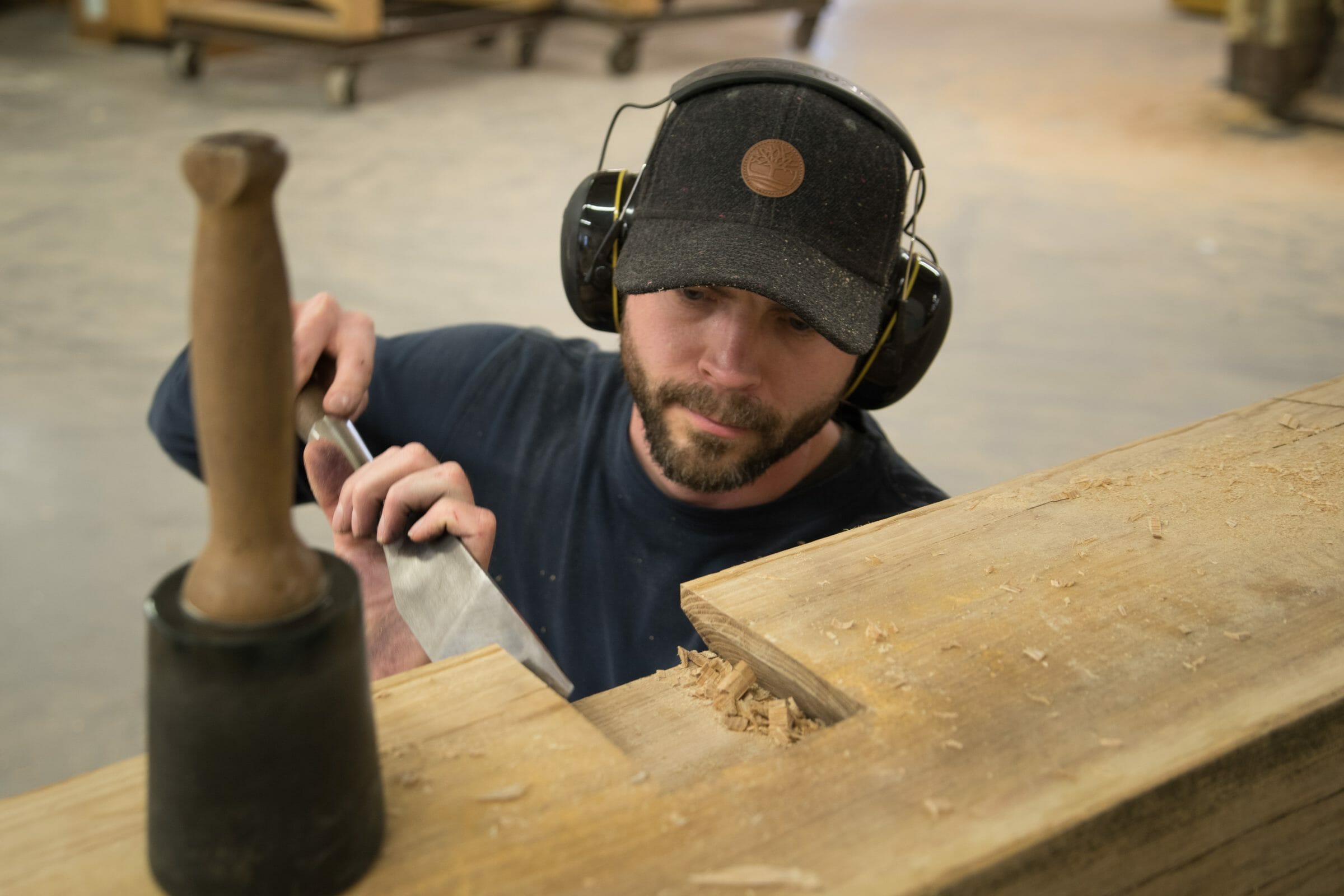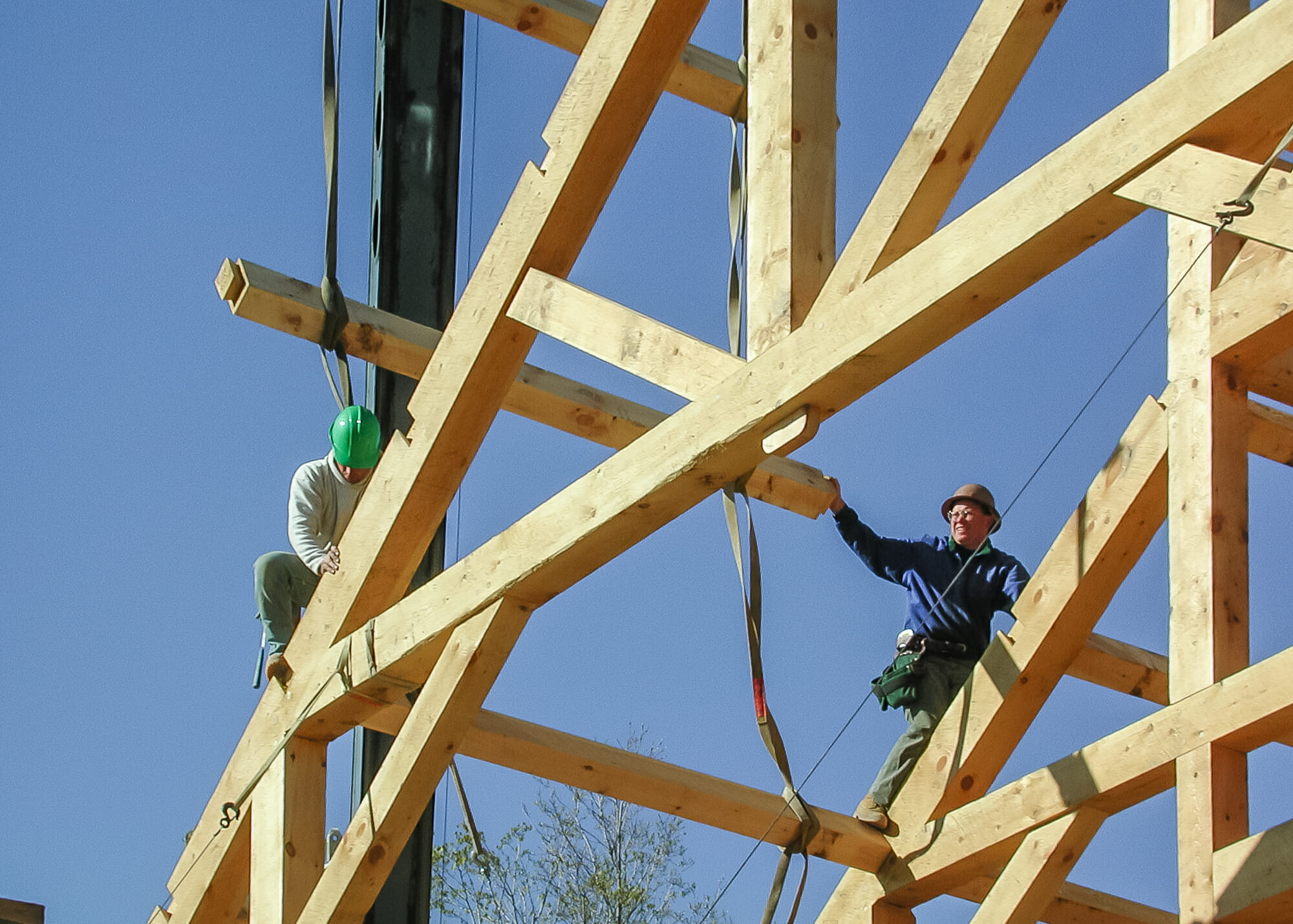The “Dovetail” is a classic wood working joint that is used in furniture making, cabinets and timber frames. If you open the drawer on a custom kitchen cabinet, chances are the four sides are joined together with dovetails. Fine furniture uses dovetail joinery too. The dovetails in timber frames are harder to spot because they are used for floor joists and purlins, which are covered with decking and flooring during the building process. Why bother cutting a beautiful joint like a dovetail only to cover it up so it will never been seen? Strength is the answer.

Dovetail joint used in timber framing.
The dovetail is cut so it wedges itself into the adjoining beam making it impossible to pull apart. While a dovetail technically is not a tension connection because the tension capacity is limited to the block shear resistance in the dovetail (in the illustration above, the tension capacity would be limited to 1 1/4″ dovetail working width x 6″ dovetail height x 2 sides x 155 lbs shear parallel to grain = 2,325 lbs.), the dovetail does a nice job pulling and holding girder beams together.
Hardwood wedges are driven into the dove tail joint to hold it tight:

Dovetail Joint used in Timber Framing with Hardwood Wedges
How a dovetail cut in a timber frame:

Cutting a Timber Frame Dovetail
A dovetail is cut into a timber beam by making angled cuts with a circular saw, then a series of vertical cuts to relieve the wood from the timber. The relief cuts are then removed with a framing chisel.

Chiseling a Dovetail Joint
The edges and bottom of the dovetail are finish trimmed with a chisel and mallet.

Installing Dovetailed Purlins in a Timber Framed Barn
Dovetailed purlins and joists are easy to install because they can be dropped into place from above. Once the purlin is set, it is safe to walk on and ties the bents together with its geometry during the rest of the erection process. When all of the bents are tied together, hardwood wedges are driven into the dovetails to finish the connection and tighten the frame.

